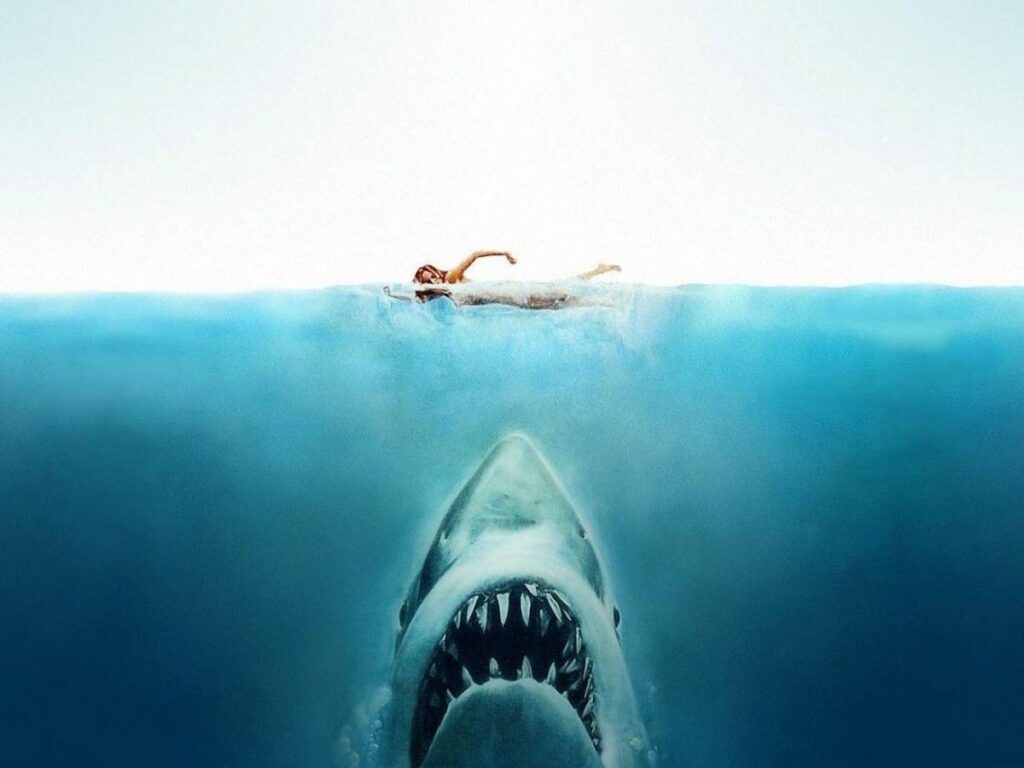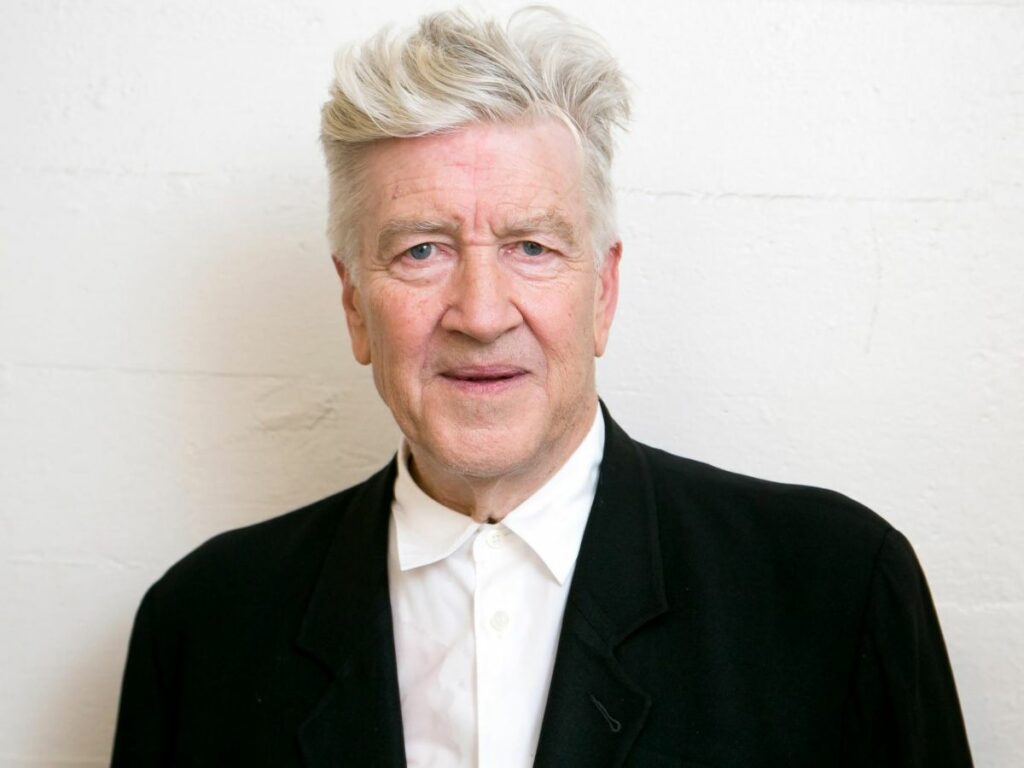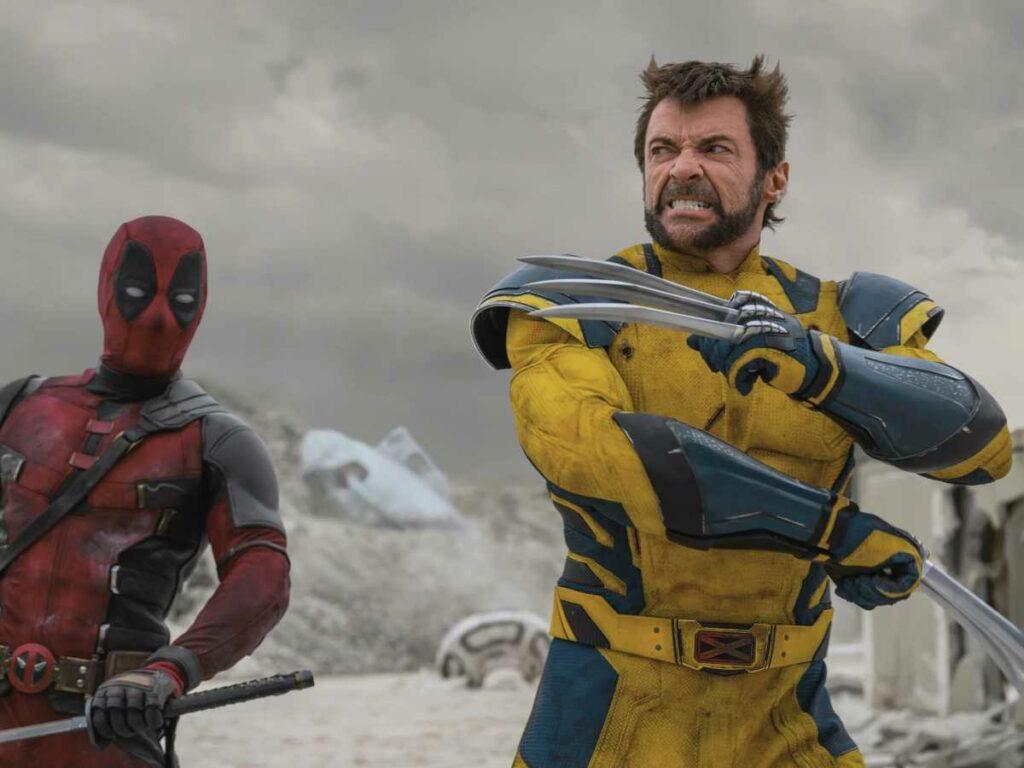In this edition of Legend Has It, we dive deep into the behind-the-scenes trivia of the iconic summer film, Jaws. Released on this day back in 1975, Jaws is a global classic whose horror-filled majesty still reigns supreme.
Few film directors are as synonymous with the word “adventure” as Steven Spielberg. Oscar winner for the touching World War II films Saving Private Ryan in 1999 and Schindler’s List in 1994, Spielberg is, however, arguably better known for his high-octane, highly imaginative adventure flicks earlier in his career – such as E.T. The Extra-Terrestrial (1982), Raiders of the Lost Ark (1981), and you guessed it, Jaws (1975).
Jaws was Spielberg’s breakthrough hit auspiciously released on June 20, 1975 (the day before the summer solstice), and it quickly became the definition of a “summer blockbuster.” It broke box office records, becoming the first film to gross over US$100 million. Jaws set a precedent for the powerful potential of the “summer” movie. And it won an impressive three Oscars, being nominated for four (including Best Picture).
A tale about a great white shark that terrorizes a peaceful New England island resort during the festive 4th of July holiday week, Jaws comes from the mind of best-selling author Peter Benchley. It taps into our most basic instincts for survival. Jaws isn’t for the faint of heart, and it often tops vintage ‘Best Of Horror’ movie lists right alongside frightening flicks like The Exorcist (1973) and Friday the 13th (1980), proving that horror can exist anywhere, even in the ocean.
So, on this June 20th anniversary of this iconic summer horror flick, let’s celebrate Jaws in splash-worthy style. What went into making this film the global phenomenon that it was, and still is? And why are some people still afraid of the ocean? Grab your sunscreen and beach blanket. Here’s the summer-y Amity Island ice cream “scoop.”
11 Awesome Facts About Jaws
1. It’s 1970s Real
Hollywood filmmaking in the 1970s was largely known for its gritty realism. Think on-location shoots. Few artificial sets. Steven Spielberg brilliantly uses this “realism” in Jaws. Shot on the small island of Martha’s Vineyard, Massachusetts, Jaws has that awesome “realistic” vibe that instantly captures its audience. Those are real ocean sunsets, real ocean breezes, etc. In fact, Jaws was the first major movie to be shot on the ocean. Spielberg also went further by employing local extras who appear in some scenes, and even using one of the extras as character inspiration for the iconic Quint character (played by Robert Shaw).
2. Spielberg Based Jaws on his Early Movie Duel
Cinephile sleuths everywhere will love this fact. One of Spielberg’s earliest directorial pieces is a TV movie called Duel from 1971, and it’s essentially a man vs. machine story. A man driving his car on a remote highway is pursued (i.e., terrorized) by a massive tractor-trailer truck driven by a seemingly faceless entity. Suspenseful, nail-biting, and full of white-knuckle adventure, Duel was a perfect springboard for Spielberg when contemplating how to approach the man vs. shark “duel” in Jaws.
3. The Film Intentionally Differs from the Best-selling Book
Spielberg wanted to keep Jaws a “straight-line adventure story.” He understood the effect it would have on the audience – and how this particular adventure would give way to brilliant horror. (Calling all those “Best of Horror” lists!) Therefore, subplots like an affair between the wife character Ellen (played by Lorraine Gary) and oceanic zoologist Matt Hooper (played by Richard Dreyfuss) were axed. The ending also famously differs from the book. Big spoiler alert – in the book, the shark sinks to the bottom of the ocean and dies. But in the film, Chief Brody (played by Roy Scheider) blasts the shark into smithereens compliments of a gun and a compressed air tank. POW! What a Hollywood ending. Moviegoers (and even novelist Peter Benchley) enjoyed it.
4. The Mechanical Shark (aka Jaws) Was a Big Pain
Many Jaws lovers are aware of the irony implicit in the success of Jaws – that it’s such a scary film in large part because the shark is rarely seen. But legend has it that this “invisible shark” was not a strategy. It was not an intended directorial vision by the great Spielberg. No, as much as he would likely want to take credit, he’s been steadfast in his admission that the mechanical shark (which he nicknamed “Bruce” after his lawyer) was often breaking down. Therefore, Spielberg was forced to shoot “around” the shark. Spielberg, cast, and crew had to get creative and learn how to make scenes great without showing their monolithic enemy.
Whether it was the terrifying “sunset ocean” death of the young Chrissie Watkin’s character at the movie’s opening, or various ocean scenes at the end of the movie with its three main characters, the shark became even more wonderfully ominous because we couldn’t see it.
5. Spielberg Was the Face of Nervousness
Because of the “authentic” filmmaking Spielberg embarked on with Jaws, he didn’t have as much control over the shoot as he wanted. Blame the ocean. Blame the ships out in the ocean who would unintentionally meander into a large panoramic frame (therefore forcing them to stop shooting for minutes on end). The young New Hollywood director admits to being constantly afraid of being fired, given the production was late and over budget. In an interview, Spielberg once admitted that he was so nervous about being fired that he chewed his fingernails during the entire five months of shooting on Martha’s Vineyard. Look at archival photos and video footage from summer 1974. Yes, Spielberg’s short fingernails corroborate!
6. The Dialogue is Full of Pearls
“You’re gonna need a bigger boat.” It’s perhaps the most well-known and beloved line of Jaws. But brace yourself. Turns out actor Roy Scheider improvised it. Then, that little ditty that character Quint recites when he, Hooper, and Chief Brody are setting out to sea to kill Jaws? It goes “Here lies the body of Mary Lee, who died at the age of a hundred and three” etc. Turns out actor Robert Shaw improvised that, as he had remembered it from a tombstone he saw in Ireland. Also, the lady that broke Hooper’s heart? In the movie, actor Richard Dreyfuss says “Mary Ellen Moffit.”
But this wasn’t the name from the script. Turns out Mary Ellen Moffit was a young girl who was on Martha’s Vineyard that summer, and who, like many on this small, charming island, had become friends with the Jaws movie cast. Imagine her glee to discover that her movie star pal, Richard Dreyfuss, decided to swap her name into this now legendary flick!
7. Crucial Footage Was Shot in Australia
Though the Amity Island setting of Jaws is fictional, the story posits Amity Island as being located in real-life New England. And Amity Island (aka Martha’s Vineyard) is as “New England clam chowder loving, plaid wearing, and pipe smoking” as it gets. Setting figures prominently in Jaws. It’s fascinating then that Spielberg was astute enough (and “realistic-appreciative” enough) to seek primo documentary footage of great white sharks in Australia to use in his film. This footage brilliantly appears in the scene where Jaws gets tangled up beside the Orca boat.
Further, in the novel, Hooper in the underwater cage gets killed by Jaws, but because the Australian footage shows an unmanned cage, Spielberg changed the script so that he could still utilize this amazing real-life footage from Australia. Therefore, Hooper escapes from the cage in the film and ultimately survives due to this important Australian shark footage. The magic of Hollywood. Watch this Jaws “tangled” scene. It’s chilling.
8. Author Peter Benchley Makes a Cameo
Some directors like Alfred Hitchcock and M. Night Shyamalan have been known to do it. And this one best-selling novelist did it, too. Drumroll – Peter Benchley appears in Jaws. He’s billed as The Interviewer. He’s a black-blazered newscaster out on the beach before all the mayhem starts to erupt. A helicopter is flying overhead. Throngs of innocent sunbathers are hanging out behind him. Tension is heavy in the air. As far as movie cameos go, this one is spot-on awesome.
9. The Oscar-winning Music Almost Wasn’t
Composer John Williams won an Oscar for Best Original Dramatic Score for Jaws. This was one of three Oscars the film won, which also include Best Editing and Best Sound. Spielberg even says the music of Jaws is responsible for a whopping 50% of the movie’s success. It’s easy to see why. The music is uncharacteristically simple (relying on just a few precious notes), which makes it distinctive and memorable. It also achieves its goal – it masterfully builds suspense, and seems to embody the unstoppable, persistent swim of this terrifying predatory fish.
Ask anyone who’s seen Jaws, and what is one of the first things they say? “I love the MUSIC!” But, ask Spielberg what he thought of the music upon first hearing John Williams play it. He thought John Williams was joking! Luckily for us, Spielberg grew to love the music, too.
10. The Terror Almost Wasn’t
Not only was Jaws the first major movie to be shot on the ocean, but it was also the first time that Martha’s Vineyard was the shooting location of a major movie. Because of this, there was some expected local “hoopla” during filming. Case in point – a local someone ended up taking clandestine photographs of the mechanical shark (aka Jaws), which were then published by the press. Lo’ and behold, would the unsightly vision of a mechanical shark ruin the highly-important “scary” factor of Jaws? Spielberg, cast, and crew were understandably worried, fearing that these photos could prove catastrophic to the movie. Should they even continue filming? Thankfully they did.
11. Spielberg Doesn’t Like to Swim in the Ocean
As a result of his experience with Jaws, legend has it that Spielberg is not a fan of swimming in the ocean. Feeling like a marked man? That the sharks might be after him in real life? Spielberg villainized a member of their aquatic tribe, albeit in the fictional world of cinema, but he admits to a bit of superstition. Can we blame him? What’s more, thanks to him and Jaws, he is not alone in his fear of the ocean, not by a long shot.
Conclusion
Truly iconic, Jaws is a film that catapulted a young twenty-something Steven Spielberg to coveted rock star status. Jaws, and its three sequels, currently stand as the second most commercially successful film franchise of all time. Just behind Star Wars.
Spielberg once reminisced on his younger self, saying that he didn’t know if he was “more courageous or more stupid” for making Jaws. It was a mammoth undertaking, which could’ve gone wrong in a plethora of ways (and did). But everyone involved persevered, making Jaws into the wonderfully monstrous classic that it is today. To think, it all hearkens back to one menacing dorsal fin, gliding across the calm ocean surface. That it does. Happy Anniversary, dear Jaws.





Oh wow, this is a great read!